ICFP 2025
4th INTERNATIONAL CONFERENCE ON FRICTION - BASED PROCESSES 2025
6-8 September 2025 | S R Convention, Tirupati, India

General Info
Few Important Sightseeing Options In And Around City
Sri Venkateswara Temple, Tirupati (1 km from city
center)
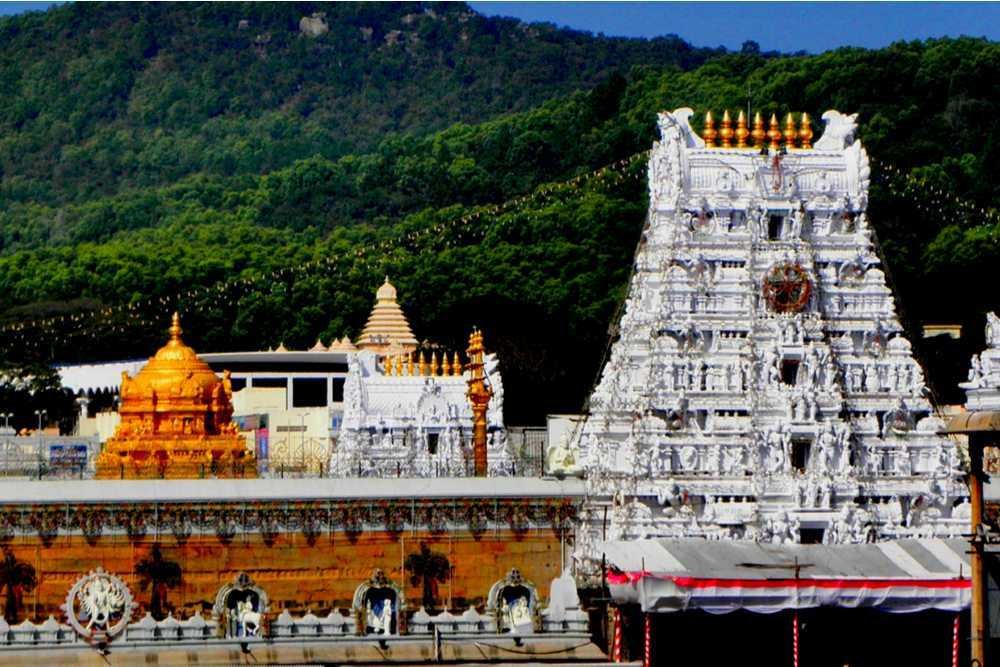 Sri
Venkateshwara Temple is the most revered and celebrated temple of Tirupati having
tourists
and pilgrims flooding in all year long. This is one of the holiest and the
wealthiest
temples in the world and millions of devotees flock here to pay their
reverence.
Sri
Venkateshwara Temple is the most revered and celebrated temple of Tirupati having
tourists
and pilgrims flooding in all year long. This is one of the holiest and the
wealthiest
temples in the world and millions of devotees flock here to pay their
reverence.
Around 50,000 pilgrims visit the temple every day, which is a massive number. Hence, a whole procedure has been planned and set up which effectively ends at the shrine for darshan. The entry for the Darshan is through Vaikuntam Queue Complex which is a series of interconnected halls that leads to the main temple. These halls are clean and comfortable with the various facilities provided.
 Sri
Venkateshwara Temple is the most revered and celebrated temple of Tirupati having
tourists
and pilgrims flooding in all year long. This is one of the holiest and the
wealthiest
temples in the world and millions of devotees flock here to pay their
reverence.
Sri
Venkateshwara Temple is the most revered and celebrated temple of Tirupati having
tourists
and pilgrims flooding in all year long. This is one of the holiest and the
wealthiest
temples in the world and millions of devotees flock here to pay their
reverence.Around 50,000 pilgrims visit the temple every day, which is a massive number. Hence, a whole procedure has been planned and set up which effectively ends at the shrine for darshan. The entry for the Darshan is through Vaikuntam Queue Complex which is a series of interconnected halls that leads to the main temple. These halls are clean and comfortable with the various facilities provided.
Akasaganga Teertham, Tirupati (12 km from city
center)
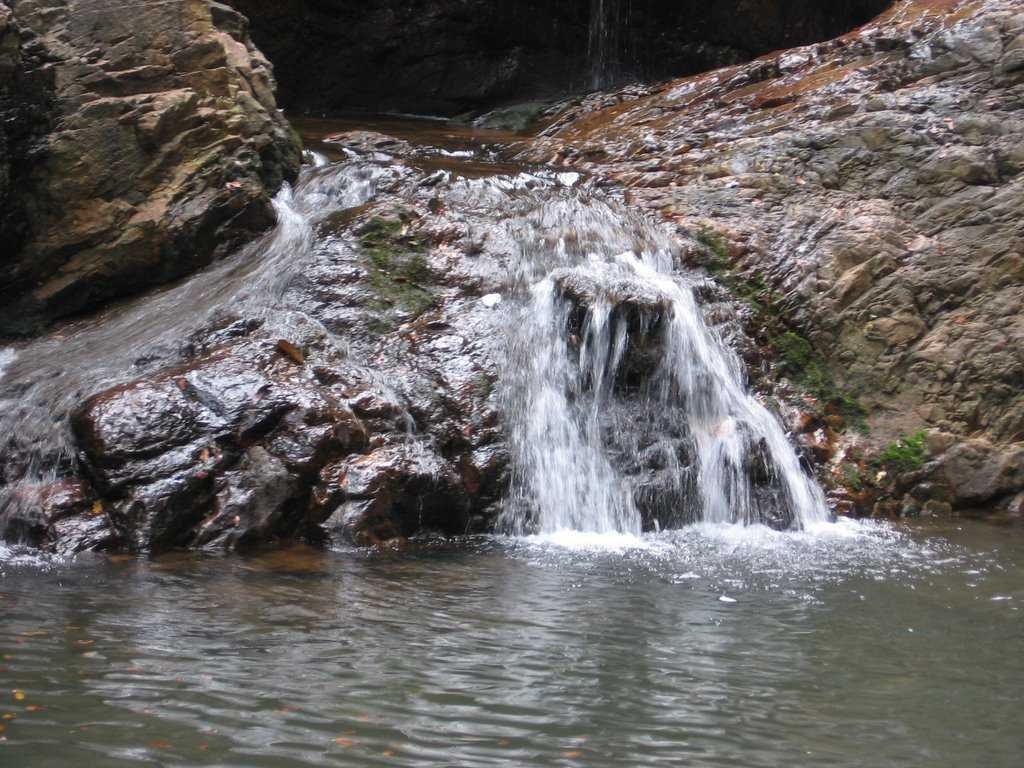 Akasaganga
Teertham is a waterfall in Tirupati, located at a distance of 3 km from the main
temple. The
waterfall has water flowing all throughout the year and holds immense religious
significance.
Akasaganga
Teertham is a waterfall in Tirupati, located at a distance of 3 km from the main
temple. The
waterfall has water flowing all throughout the year and holds immense religious
significance.
Pilgrims can also pay homage to the Devi temple situated very close to the waterfall. During the monsoons, the waterfall is a beautiful sight to the eyes.
 Akasaganga
Teertham is a waterfall in Tirupati, located at a distance of 3 km from the main
temple. The
waterfall has water flowing all throughout the year and holds immense religious
significance.
Akasaganga
Teertham is a waterfall in Tirupati, located at a distance of 3 km from the main
temple. The
waterfall has water flowing all throughout the year and holds immense religious
significance.
Pilgrims can also pay homage to the Devi temple situated very close to the waterfall. During the monsoons, the waterfall is a beautiful sight to the eyes.
Silathoranam, Tirupati (11 km from city center)
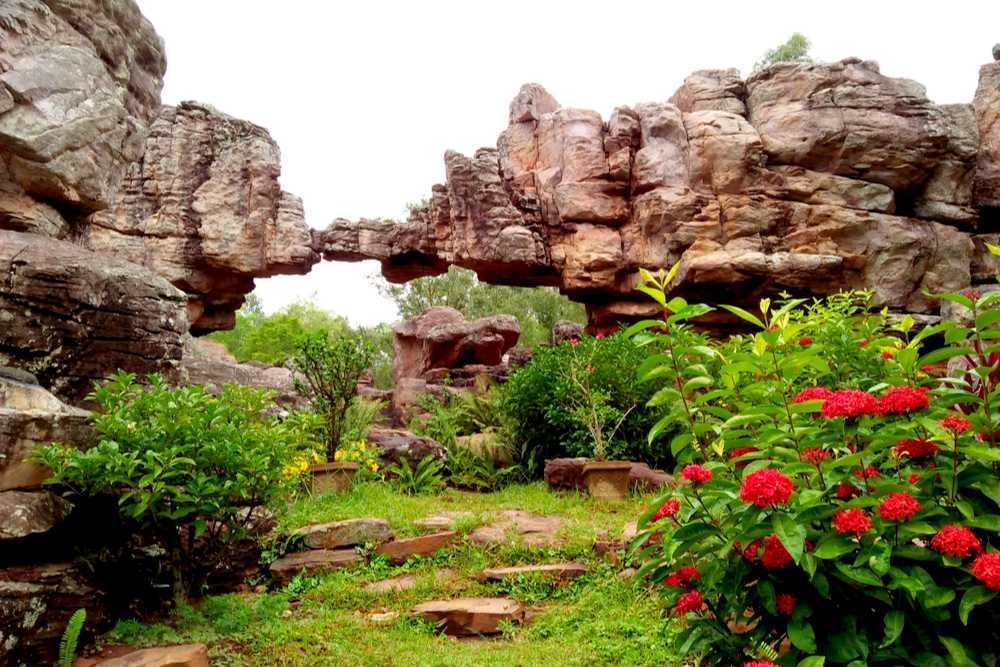 One of
the natural marvels that history left behind, the Silathoranam, now, finds itself
being an
important landmark in archaeology and heritage. This is a natural rock formation,
one of the
only three of this kind in the world.
One of
the natural marvels that history left behind, the Silathoranam, now, finds itself
being an
important landmark in archaeology and heritage. This is a natural rock formation,
one of the
only three of this kind in the world.
While geology and archaeology foster a number of theories, the rock formation is also tied to beliefs of its connection with the idol of Lord Venkateswara. The rock formation is a national monument and is protected by the State Government.
 One of
the natural marvels that history left behind, the Silathoranam, now, finds itself
being an
important landmark in archaeology and heritage. This is a natural rock formation,
one of the
only three of this kind in the world.
One of
the natural marvels that history left behind, the Silathoranam, now, finds itself
being an
important landmark in archaeology and heritage. This is a natural rock formation,
one of the
only three of this kind in the world.
While geology and archaeology foster a number of theories, the rock formation is also tied to beliefs of its connection with the idol of Lord Venkateswara. The rock formation is a national monument and is protected by the State Government.
Swami Pushkarini Lake (0 km from city center)
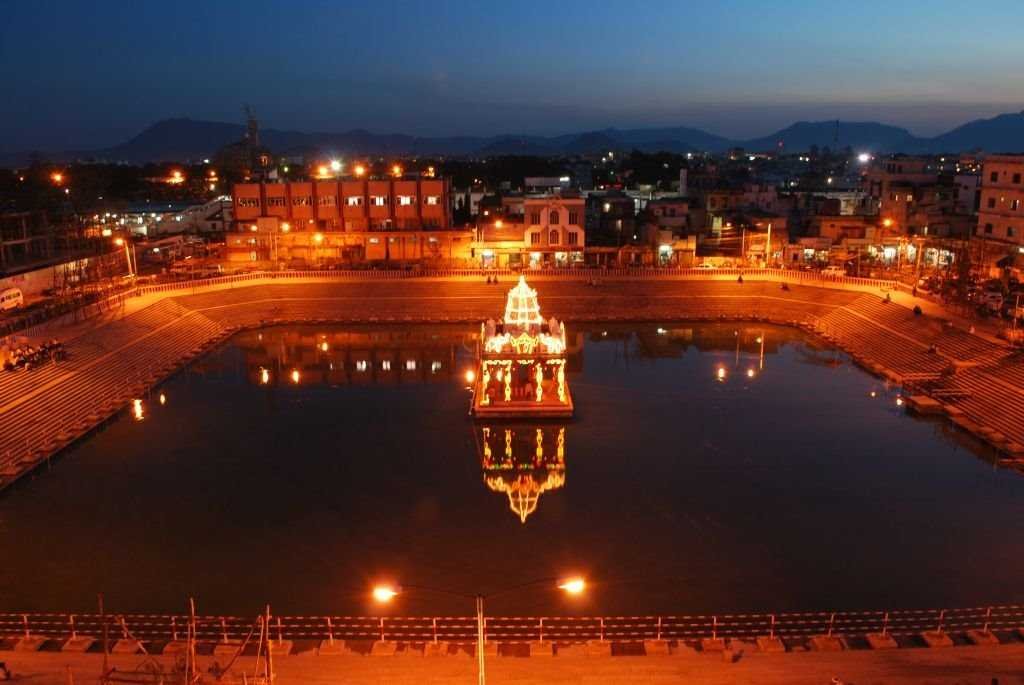 Almost
neighboring the Sri Venkateshwara Temple, is Swami Pushkarini Lake. According to the
legends, the lake belonged to Lord Vishnu and was located in Vaikuntham.
Almost
neighboring the Sri Venkateshwara Temple, is Swami Pushkarini Lake. According to the
legends, the lake belonged to Lord Vishnu and was located in Vaikuntham.
It was brought to the earth by Garuda, for the sport of Sri Venkateshwara. Extremely holy, the pilgrims usually take a dip in the waters of this lake before proceeding to the main temple.
 Almost
neighboring the Sri Venkateshwara Temple, is Swami Pushkarini Lake. According to the
legends, the lake belonged to Lord Vishnu and was located in Vaikuntham.
Almost
neighboring the Sri Venkateshwara Temple, is Swami Pushkarini Lake. According to the
legends, the lake belonged to Lord Vishnu and was located in Vaikuntham.
It was brought to the earth by Garuda, for the sport of Sri Venkateshwara. Extremely holy, the pilgrims usually take a dip in the waters of this lake before proceeding to the main temple.
Sri Padmavathi Ammavari Temple (1 km from city
center)
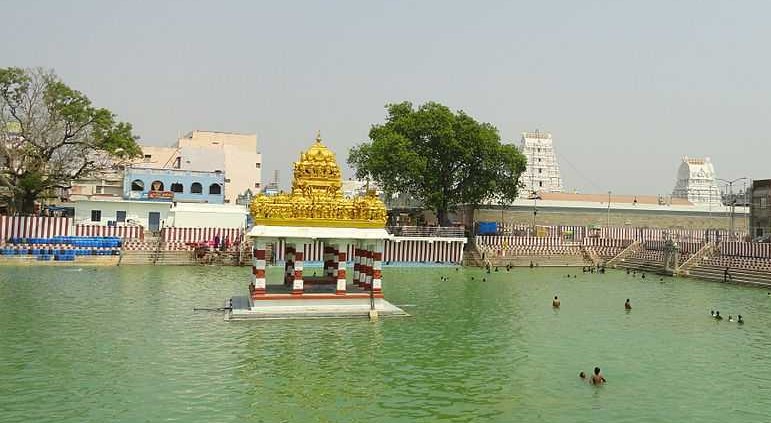 At a
little distance from the main city area, one finds the Sri Padmavathi Ammavari
Temple
dedicated to Goddess Padmavathi. One of the many sacred structures of Tirupati, this
one is
home to many legends and stories about the Goddess.
At a
little distance from the main city area, one finds the Sri Padmavathi Ammavari
Temple
dedicated to Goddess Padmavathi. One of the many sacred structures of Tirupati, this
one is
home to many legends and stories about the Goddess.
The legend has it that while Akasha Raja of Thondamandalam was having a great yagna performed and had the earth ploughed, he found a little girl in a lotus flower, and hence the name. A voice from the skies asked him to love and bring up the child. As she grew up, she was married to Lord Venkateshwara. The temple is frequently visited by the devotees on their spiritual trail around the town.
The legend has it that while Akasha Raja of Thondamandalam was having a great yagna performed and had the earth ploughed, he found a little girl in a lotus flower, and hence the name. A voice from the skies asked him to love and bring up the child. As she grew up, she was married to Lord Venkateshwara. The temple is frequently visited by the devotees on their spiritual trail around the town.
TTD gardens, Tirupati (4 km from city center)
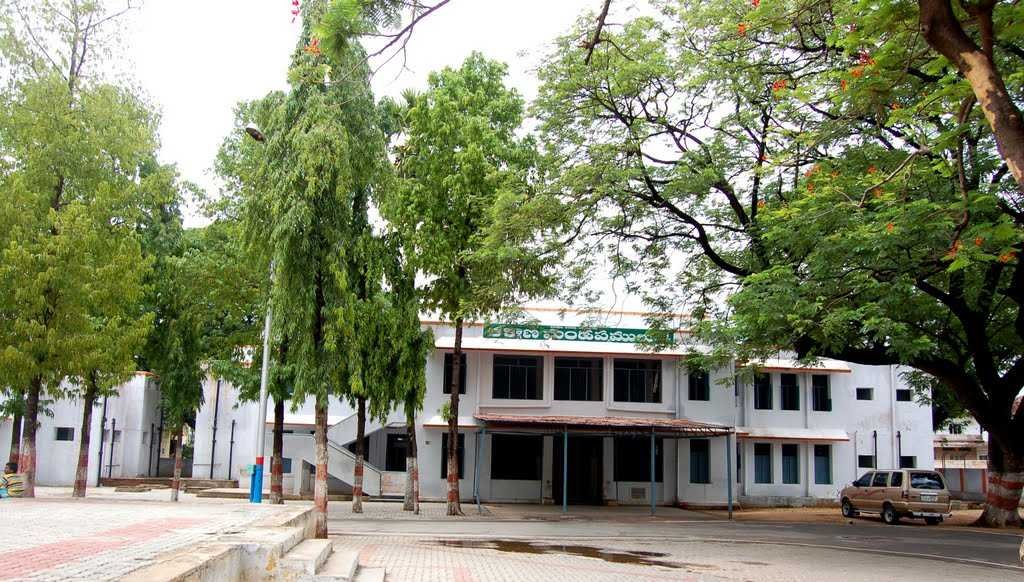 Spreading
over an
area of 460 acres, the TTD gardens in Tirupati are known for their ornately
decorated and
manicured flower gardens. Alongside its lush green beauty, the garden also includes
Alwar
Tank, Mangalabhavi and Ananthapalligunta.
Spreading
over an
area of 460 acres, the TTD gardens in Tirupati are known for their ornately
decorated and
manicured flower gardens. Alongside its lush green beauty, the garden also includes
Alwar
Tank, Mangalabhavi and Ananthapalligunta.
Flowers to the all the temples in Tirupati are supplied from this garden. They have an annual horticulture show and Pushpa Yagnam wherein exotic flowers are displyed for the visitors
 Spreading
over an
area of 460 acres, the TTD gardens in Tirupati are known for their ornately
decorated and
manicured flower gardens. Alongside its lush green beauty, the garden also includes
Alwar
Tank, Mangalabhavi and Ananthapalligunta.
Spreading
over an
area of 460 acres, the TTD gardens in Tirupati are known for their ornately
decorated and
manicured flower gardens. Alongside its lush green beauty, the garden also includes
Alwar
Tank, Mangalabhavi and Ananthapalligunta.Flowers to the all the temples in Tirupati are supplied from this garden. They have an annual horticulture show and Pushpa Yagnam wherein exotic flowers are displyed for the visitors
Chittoor (57 km from city center)
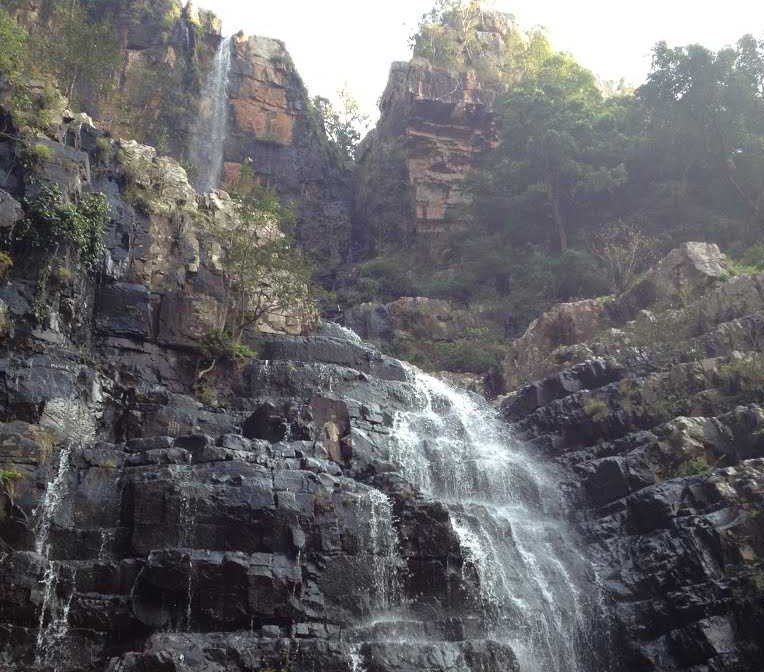 Steeped in
religion, devotion and architecture, Chittoor is a place that everyone should visit
at least
once in their lifetime.
Steeped in
religion, devotion and architecture, Chittoor is a place that everyone should visit
at least
once in their lifetime.
Also blessed with scenic beauty, cascading waterfalls and a beautiful hill station, Chittoor is not a disappointment to the traveller who seeks redemption from the busy metro life. Also known as the Mango City, Chittoor offers myriad varities of heavenly mangoes to please its visitors.
 Steeped in
religion, devotion and architecture, Chittoor is a place that everyone should visit
at least
once in their lifetime.
Steeped in
religion, devotion and architecture, Chittoor is a place that everyone should visit
at least
once in their lifetime.
Also blessed with scenic beauty, cascading waterfalls and a beautiful hill station, Chittoor is not a disappointment to the traveller who seeks redemption from the busy metro life. Also known as the Mango City, Chittoor offers myriad varities of heavenly mangoes to please its visitors.
Sri Venkateswara Dhyana Vignan (56 km from city
center)
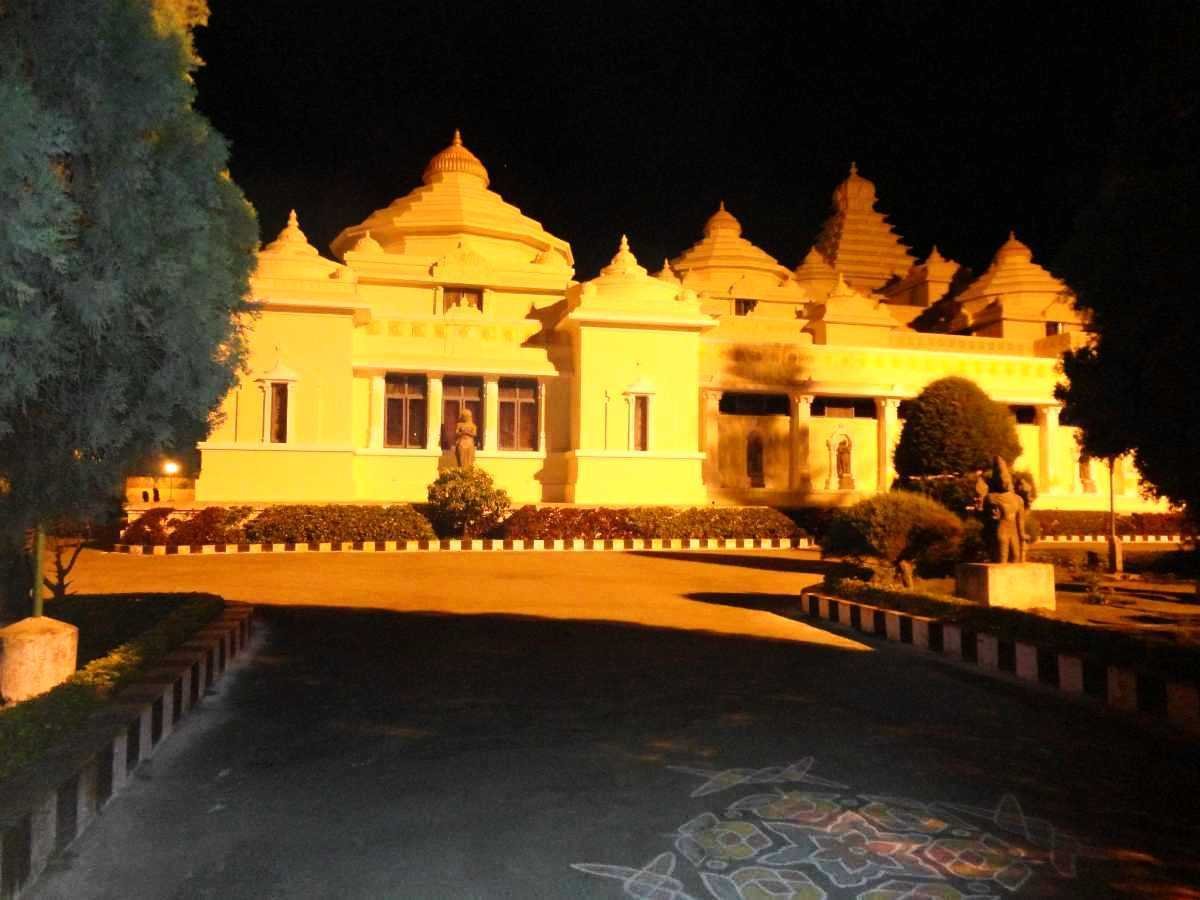 Established in the year 1980, the Sri Venkateswara Dhyana Vignan
Mandiram in
Tirupati is a museum that houses some of the most traditional articles that are used
to
perform Puja.
Established in the year 1980, the Sri Venkateswara Dhyana Vignan
Mandiram in
Tirupati is a museum that houses some of the most traditional articles that are used
to
perform Puja.
Many stone and wood carved items can also be sighted here. The museum is extremely beautiful and fills into you a sense of religious faith not easy to describe. This is one of the experiences, one must not miss while in Tirupati.
 Established in the year 1980, the Sri Venkateswara Dhyana Vignan
Mandiram in
Tirupati is a museum that houses some of the most traditional articles that are used
to
perform Puja.
Established in the year 1980, the Sri Venkateswara Dhyana Vignan
Mandiram in
Tirupati is a museum that houses some of the most traditional articles that are used
to
perform Puja.
Many stone and wood carved items can also be sighted here. The museum is extremely beautiful and fills into you a sense of religious faith not easy to describe. This is one of the experiences, one must not miss while in Tirupati.
Sri Govindarajaswami Temple (0 km from city
center)
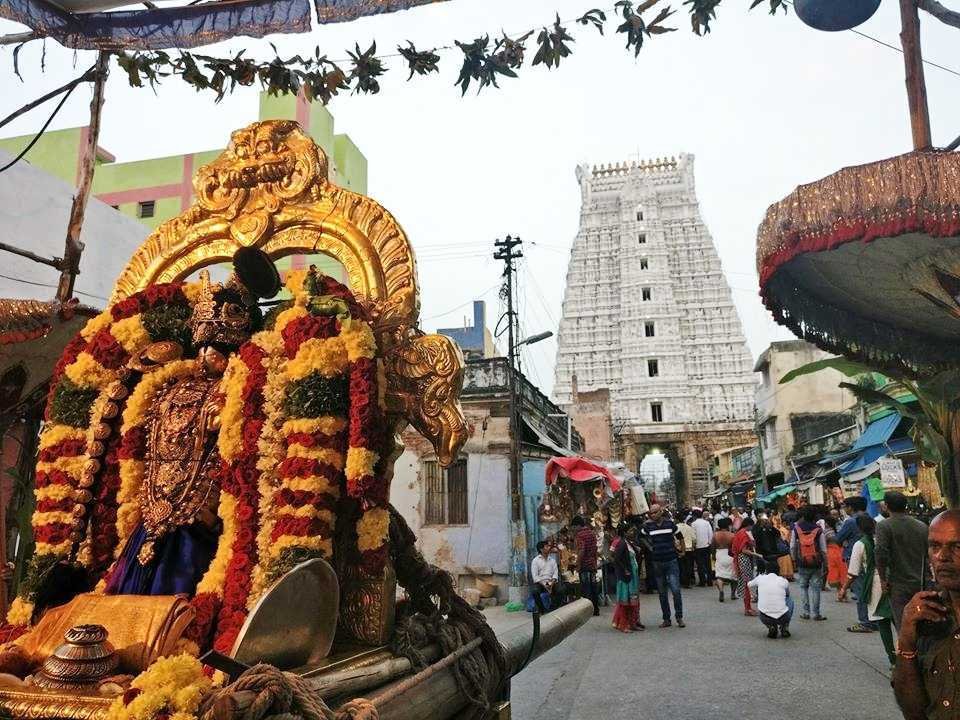 Sri
Govindarajaswami Temple is a 12th century Hindu Vaishnavite shrine built by Saint
Ramanujacharya and is one of the biggest temple complexes in the district. The
presiding
deity is Lord Vishnu, also called Govindarajaswami. The beautiful traditional
Dravidian
architecture and its rich culture attract tourists in quite a large number every
year.
Sri
Govindarajaswami Temple is a 12th century Hindu Vaishnavite shrine built by Saint
Ramanujacharya and is one of the biggest temple complexes in the district. The
presiding
deity is Lord Vishnu, also called Govindarajaswami. The beautiful traditional
Dravidian
architecture and its rich culture attract tourists in quite a large number every
year.
 Sri
Govindarajaswami Temple is a 12th century Hindu Vaishnavite shrine built by Saint
Ramanujacharya and is one of the biggest temple complexes in the district. The
presiding
deity is Lord Vishnu, also called Govindarajaswami. The beautiful traditional
Dravidian
architecture and its rich culture attract tourists in quite a large number every
year.
Sri
Govindarajaswami Temple is a 12th century Hindu Vaishnavite shrine built by Saint
Ramanujacharya and is one of the biggest temple complexes in the district. The
presiding
deity is Lord Vishnu, also called Govindarajaswami. The beautiful traditional
Dravidian
architecture and its rich culture attract tourists in quite a large number every
year.
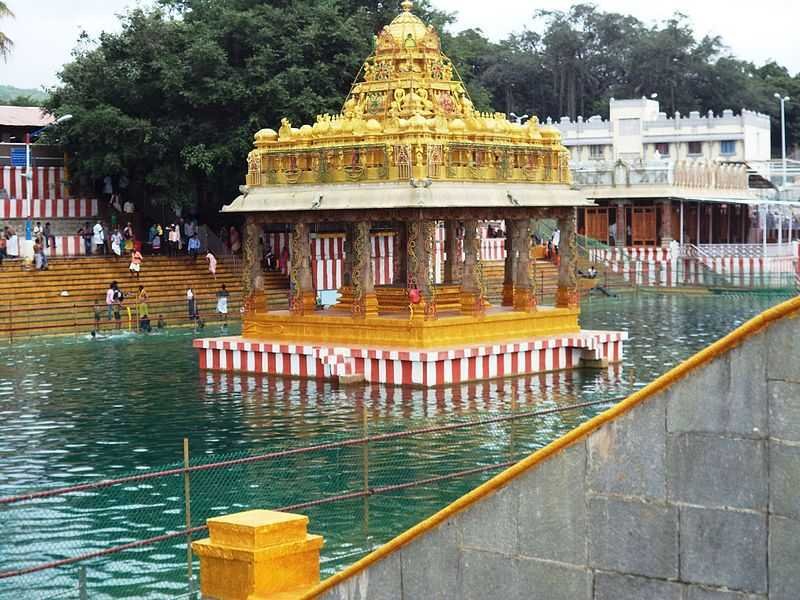 Standing
to the north of Sri Venkateswara Temple is the Sri Varahaswami Temple which
according to a
lot, is said to belong to Sri Adi varahaswami. Various legends surround this
temple.
Standing
to the north of Sri Venkateswara Temple is the Sri Varahaswami Temple which
according to a
lot, is said to belong to Sri Adi varahaswami. Various legends surround this
temple.If visiting the Venkateswara temple, it is advised to first pay a visit to this temple. The reason behind this too finds roots in a legend, according to which Sri Varahaswami owned the seven hills. He agreed to hand them to Sri Venkateswaraswami, on the condition that he too, should be worshipped. Hence, Sri Venkateswaraswami asked his devotees, to first pay a visit to Sri Varahaswami and then to him.
Nellore (12 km from city center)
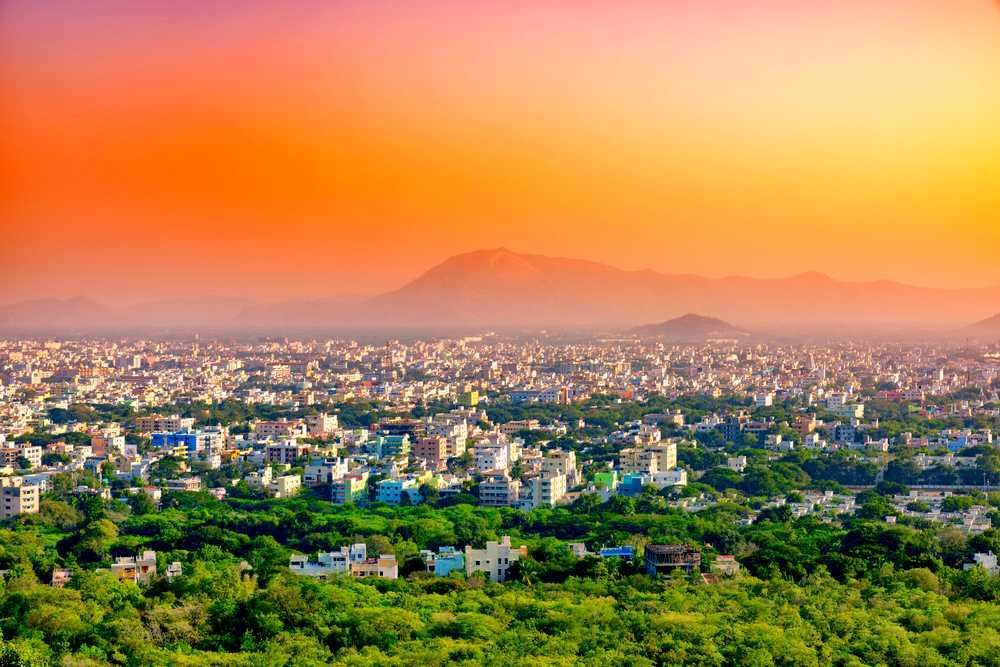 Nellore is a
beautiful city lying on the banks of River Penna, a Municipal Corporation in the
South
Indian state of Andhra Pradesh. Anciently known as Vikrama Simhapuri, it derived its
name
from "Nelluru", a combination of Tamil words "Nel" and "Ooru" where Nel stands for
Paddy and
Ooru means Place.
Nellore is a
beautiful city lying on the banks of River Penna, a Municipal Corporation in the
South
Indian state of Andhra Pradesh. Anciently known as Vikrama Simhapuri, it derived its
name
from "Nelluru", a combination of Tamil words "Nel" and "Ooru" where Nel stands for
Paddy and
Ooru means Place.
This city, situated on the banks of the Penne River is known for its rich agriculture and has been an exporter of Rice, Sugar cane and cane based products, prawns, shrimps and a varied set of crops.
 Nellore is a
beautiful city lying on the banks of River Penna, a Municipal Corporation in the
South
Indian state of Andhra Pradesh. Anciently known as Vikrama Simhapuri, it derived its
name
from "Nelluru", a combination of Tamil words "Nel" and "Ooru" where Nel stands for
Paddy and
Ooru means Place.
Nellore is a
beautiful city lying on the banks of River Penna, a Municipal Corporation in the
South
Indian state of Andhra Pradesh. Anciently known as Vikrama Simhapuri, it derived its
name
from "Nelluru", a combination of Tamil words "Nel" and "Ooru" where Nel stands for
Paddy and
Ooru means Place.This city, situated on the banks of the Penne River is known for its rich agriculture and has been an exporter of Rice, Sugar cane and cane based products, prawns, shrimps and a varied set of crops.
ISKCON Tirupati (2 km from city center)
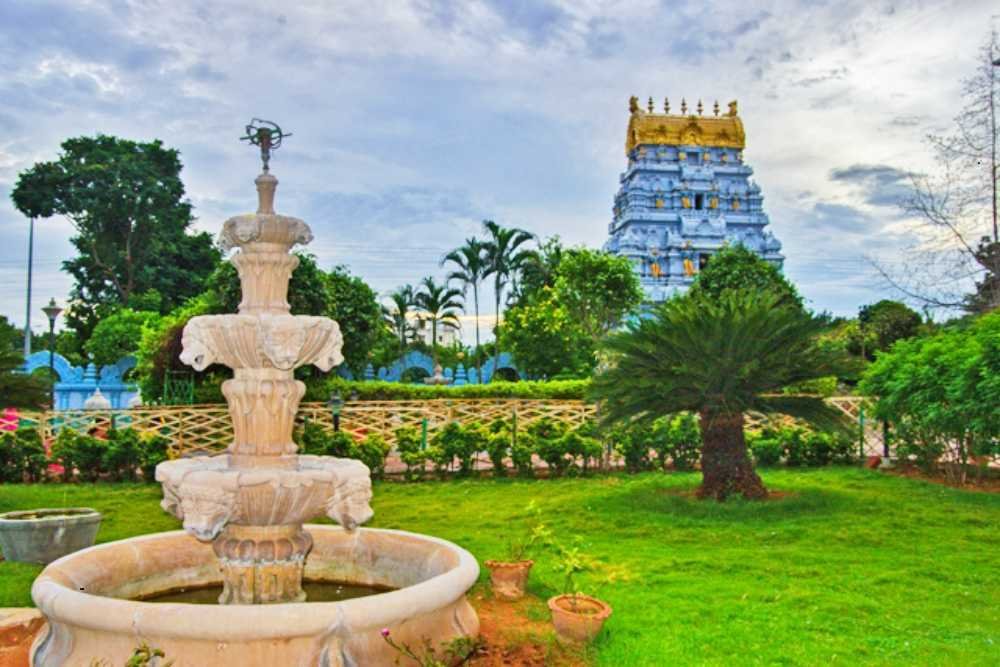 Located at
the foothills of Tirumala Hills, ISKCON Tirupati is one of the most famous
pilgrimages in
the city. Srila Prabhupada, during his visit in 1974, suggested the teachings from
Bhagwad
Geeta be propagated by establishing a centre of Vedic Culture. ISKCON Tirupati was
thus
established in 1982 to revive the messages of Lord Krishna. It is believed to be the
only
way to bring about peace and harmony in the world.
Located at
the foothills of Tirumala Hills, ISKCON Tirupati is one of the most famous
pilgrimages in
the city. Srila Prabhupada, during his visit in 1974, suggested the teachings from
Bhagwad
Geeta be propagated by establishing a centre of Vedic Culture. ISKCON Tirupati was
thus
established in 1982 to revive the messages of Lord Krishna. It is believed to be the
only
way to bring about peace and harmony in the world.
 Located at
the foothills of Tirumala Hills, ISKCON Tirupati is one of the most famous
pilgrimages in
the city. Srila Prabhupada, during his visit in 1974, suggested the teachings from
Bhagwad
Geeta be propagated by establishing a centre of Vedic Culture. ISKCON Tirupati was
thus
established in 1982 to revive the messages of Lord Krishna. It is believed to be the
only
way to bring about peace and harmony in the world.
Located at
the foothills of Tirumala Hills, ISKCON Tirupati is one of the most famous
pilgrimages in
the city. Srila Prabhupada, during his visit in 1974, suggested the teachings from
Bhagwad
Geeta be propagated by establishing a centre of Vedic Culture. ISKCON Tirupati was
thus
established in 1982 to revive the messages of Lord Krishna. It is believed to be the
only
way to bring about peace and harmony in the world.
Tumburu Teertham (8 km from city center)
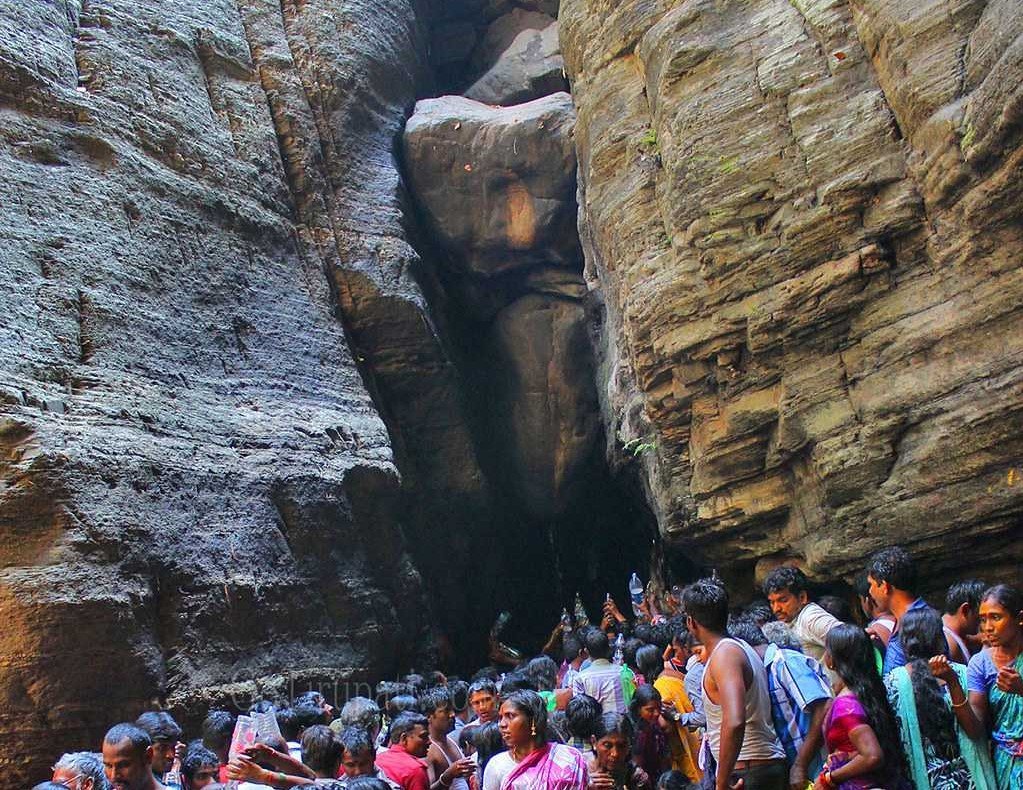 Tumbhuru
Teertham is a sacred lake located amidst dense natural vegetation. The waters are
believed
to have magical powers and can absolve one's sins and help them attain moksha. The
attraction is also famous for its natural beauty and is frequented by nature lovers
for
nature walks.
Tumbhuru
Teertham is a sacred lake located amidst dense natural vegetation. The waters are
believed
to have magical powers and can absolve one's sins and help them attain moksha. The
attraction is also famous for its natural beauty and is frequented by nature lovers
for
nature walks.
 Tumbhuru
Teertham is a sacred lake located amidst dense natural vegetation. The waters are
believed
to have magical powers and can absolve one's sins and help them attain moksha. The
attraction is also famous for its natural beauty and is frequented by nature lovers
for
nature walks.
Tumbhuru
Teertham is a sacred lake located amidst dense natural vegetation. The waters are
believed
to have magical powers and can absolve one's sins and help them attain moksha. The
attraction is also famous for its natural beauty and is frequented by nature lovers
for
nature walks.
Deer Park, Tirupati (2 km from city center)
 Located at
the foothills of Tirumala Hills, ISKCON Tirupati is one of the most famous
pilgrimages in
the city. Srila Prabhupada, during his visit in 1974, suggested the teachings from
Bhagwad
Geeta be propagated by establishing a centre of Vedic Culture. ISKCON Tirupati was
thus
established in 1982 to revive the messages of Lord Krishna. It is believed to be the
only
way to bring about peace and harmony in the world.
Located at
the foothills of Tirumala Hills, ISKCON Tirupati is one of the most famous
pilgrimages in
the city. Srila Prabhupada, during his visit in 1974, suggested the teachings from
Bhagwad
Geeta be propagated by establishing a centre of Vedic Culture. ISKCON Tirupati was
thus
established in 1982 to revive the messages of Lord Krishna. It is believed to be the
only
way to bring about peace and harmony in the world.
 Located at
the foothills of Tirumala Hills, ISKCON Tirupati is one of the most famous
pilgrimages in
the city. Srila Prabhupada, during his visit in 1974, suggested the teachings from
Bhagwad
Geeta be propagated by establishing a centre of Vedic Culture. ISKCON Tirupati was
thus
established in 1982 to revive the messages of Lord Krishna. It is believed to be the
only
way to bring about peace and harmony in the world.
Located at
the foothills of Tirumala Hills, ISKCON Tirupati is one of the most famous
pilgrimages in
the city. Srila Prabhupada, during his visit in 1974, suggested the teachings from
Bhagwad
Geeta be propagated by establishing a centre of Vedic Culture. ISKCON Tirupati was
thus
established in 1982 to revive the messages of Lord Krishna. It is believed to be the
only
way to bring about peace and harmony in the world.
ParasuRameswara Swamy Gudimallam Temple
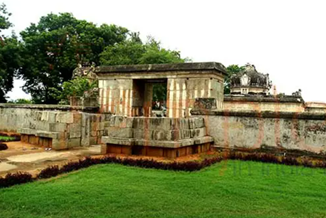 Sri
Parasurameswara Swamy Gudimallam Temple, Gudimallam is a small village located in
Srikalahasti Mandal, of the Chittoor district of Andhra Pradesh, India. It is seven
miles
away from Renigunta Railway Junction of considerable significance. Though a small
village,
historically it is very important because it has a beautiful Siva Temple which is
popularly
known as ”Sri Parasurameswara Temple”.
The main importance of the temple lies in the Linga which is housed in the
Garbhagriha of
the temple. This is supposed to be the earliest Linga discovered so far and it has
been
assigned to the 2nd or 1st century BC. The name of the temple is mentioned as
Parasurameswara Temple in the inscriptions.
Sri
Parasurameswara Swamy Gudimallam Temple, Gudimallam is a small village located in
Srikalahasti Mandal, of the Chittoor district of Andhra Pradesh, India. It is seven
miles
away from Renigunta Railway Junction of considerable significance. Though a small
village,
historically it is very important because it has a beautiful Siva Temple which is
popularly
known as ”Sri Parasurameswara Temple”.
The main importance of the temple lies in the Linga which is housed in the
Garbhagriha of
the temple. This is supposed to be the earliest Linga discovered so far and it has
been
assigned to the 2nd or 1st century BC. The name of the temple is mentioned as
Parasurameswara Temple in the inscriptions.
 Sri
Parasurameswara Swamy Gudimallam Temple, Gudimallam is a small village located in
Srikalahasti Mandal, of the Chittoor district of Andhra Pradesh, India. It is seven
miles
away from Renigunta Railway Junction of considerable significance. Though a small
village,
historically it is very important because it has a beautiful Siva Temple which is
popularly
known as ”Sri Parasurameswara Temple”.
The main importance of the temple lies in the Linga which is housed in the
Garbhagriha of
the temple. This is supposed to be the earliest Linga discovered so far and it has
been
assigned to the 2nd or 1st century BC. The name of the temple is mentioned as
Parasurameswara Temple in the inscriptions.
Sri
Parasurameswara Swamy Gudimallam Temple, Gudimallam is a small village located in
Srikalahasti Mandal, of the Chittoor district of Andhra Pradesh, India. It is seven
miles
away from Renigunta Railway Junction of considerable significance. Though a small
village,
historically it is very important because it has a beautiful Siva Temple which is
popularly
known as ”Sri Parasurameswara Temple”.
The main importance of the temple lies in the Linga which is housed in the
Garbhagriha of
the temple. This is supposed to be the earliest Linga discovered so far and it has
been
assigned to the 2nd or 1st century BC. The name of the temple is mentioned as
Parasurameswara Temple in the inscriptions.
Vakula Matha Temple, Peruru Village
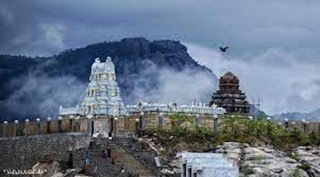 Vakula Devi is the foster mother of Lord Venkateswara. Vakula Matha Temple is
situated in
Tirupati, Andhra Pradesh. As per the legend of Tirumala, it dates back to Dvapara
Yuga when
Yasoda, the foster mother of Lord Krishna (avatar of Lord Vishnu) complains to him
that she
couldn’t witness any of his marriages. To this, Lord Krishna replies he would ensure
she
would get such opportunity later in Kali Yuga.In Kali Yuga, Lord Vishnu adorns the
world as
Lord Venkateswara and Yasoda is reborn as Vakula Devi, foster mother of Lord
Venkateswara,
to arrange his wedding with Padmavati the daughter of King Akasa Raja. Thus Vakula
Devi
fulfills her wish to witness the kalyanam (wedding) of Lord Venkateswara.
Vakula Devi is the foster mother of Lord Venkateswara. Vakula Matha Temple is
situated in
Tirupati, Andhra Pradesh. As per the legend of Tirumala, it dates back to Dvapara
Yuga when
Yasoda, the foster mother of Lord Krishna (avatar of Lord Vishnu) complains to him
that she
couldn’t witness any of his marriages. To this, Lord Krishna replies he would ensure
she
would get such opportunity later in Kali Yuga.In Kali Yuga, Lord Vishnu adorns the
world as
Lord Venkateswara and Yasoda is reborn as Vakula Devi, foster mother of Lord
Venkateswara,
to arrange his wedding with Padmavati the daughter of King Akasa Raja. Thus Vakula
Devi
fulfills her wish to witness the kalyanam (wedding) of Lord Venkateswara.
 Vakula Devi is the foster mother of Lord Venkateswara. Vakula Matha Temple is
situated in
Tirupati, Andhra Pradesh. As per the legend of Tirumala, it dates back to Dvapara
Yuga when
Yasoda, the foster mother of Lord Krishna (avatar of Lord Vishnu) complains to him
that she
couldn’t witness any of his marriages. To this, Lord Krishna replies he would ensure
she
would get such opportunity later in Kali Yuga.In Kali Yuga, Lord Vishnu adorns the
world as
Lord Venkateswara and Yasoda is reborn as Vakula Devi, foster mother of Lord
Venkateswara,
to arrange his wedding with Padmavati the daughter of King Akasa Raja. Thus Vakula
Devi
fulfills her wish to witness the kalyanam (wedding) of Lord Venkateswara.
Vakula Devi is the foster mother of Lord Venkateswara. Vakula Matha Temple is
situated in
Tirupati, Andhra Pradesh. As per the legend of Tirumala, it dates back to Dvapara
Yuga when
Yasoda, the foster mother of Lord Krishna (avatar of Lord Vishnu) complains to him
that she
couldn’t witness any of his marriages. To this, Lord Krishna replies he would ensure
she
would get such opportunity later in Kali Yuga.In Kali Yuga, Lord Vishnu adorns the
world as
Lord Venkateswara and Yasoda is reborn as Vakula Devi, foster mother of Lord
Venkateswara,
to arrange his wedding with Padmavati the daughter of King Akasa Raja. Thus Vakula
Devi
fulfills her wish to witness the kalyanam (wedding) of Lord Venkateswara.
Sri Varasidhi Vinayaka Swamy Temple
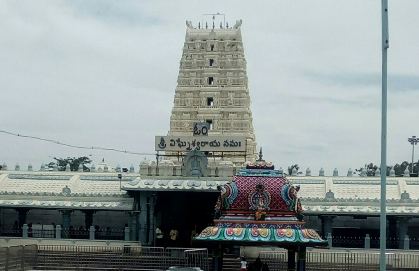 Vinayaka
Temple or Sri Varasidhi Vinayaka Swamy Temple is a Hindu temple of Ganesha. It is
located at
Kanipakam in Chittoor district of Andhra Pradesh, India. The temple is about 11 km
from
Chittoor and 68 km from Tirupati.
According to legend, there were three brothers who were mute, deaf and blind. They
were
digging a well to fetch water to their field. The device they were using fell into
the well
hitting hard object. When they dug further, blood started to gush out of the well
and the
three got rid of their disabilities. The villagers rushed to the spot and found
deity of
Ganesha. Villagers dug further, but they were not able to find the base of the
deity. The
deity sits in the well which is always full of water.
Vinayaka
Temple or Sri Varasidhi Vinayaka Swamy Temple is a Hindu temple of Ganesha. It is
located at
Kanipakam in Chittoor district of Andhra Pradesh, India. The temple is about 11 km
from
Chittoor and 68 km from Tirupati.
According to legend, there were three brothers who were mute, deaf and blind. They
were
digging a well to fetch water to their field. The device they were using fell into
the well
hitting hard object. When they dug further, blood started to gush out of the well
and the
three got rid of their disabilities. The villagers rushed to the spot and found
deity of
Ganesha. Villagers dug further, but they were not able to find the base of the
deity. The
deity sits in the well which is always full of water.
 Vinayaka
Temple or Sri Varasidhi Vinayaka Swamy Temple is a Hindu temple of Ganesha. It is
located at
Kanipakam in Chittoor district of Andhra Pradesh, India. The temple is about 11 km
from
Chittoor and 68 km from Tirupati.
According to legend, there were three brothers who were mute, deaf and blind. They
were
digging a well to fetch water to their field. The device they were using fell into
the well
hitting hard object. When they dug further, blood started to gush out of the well
and the
three got rid of their disabilities. The villagers rushed to the spot and found
deity of
Ganesha. Villagers dug further, but they were not able to find the base of the
deity. The
deity sits in the well which is always full of water.
Vinayaka
Temple or Sri Varasidhi Vinayaka Swamy Temple is a Hindu temple of Ganesha. It is
located at
Kanipakam in Chittoor district of Andhra Pradesh, India. The temple is about 11 km
from
Chittoor and 68 km from Tirupati.
According to legend, there were three brothers who were mute, deaf and blind. They
were
digging a well to fetch water to their field. The device they were using fell into
the well
hitting hard object. When they dug further, blood started to gush out of the well
and the
three got rid of their disabilities. The villagers rushed to the spot and found
deity of
Ganesha. Villagers dug further, but they were not able to find the base of the
deity. The
deity sits in the well which is always full of water.
Govindarajaswamy Temple, Tirupati
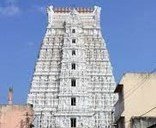 Sri Govindarajaswamy Temple is an ancient Hindu-Vaishnavite temple situated at the
heart of
the Tirupati city in Tirupati District of Andhra Pradesh state in India. The temple
was
built during 12 century and was consecrated in the year 1130 AD by Saint
Ramanujacharya. The
temple is one of the earliest structures in Tirupati and also one of the biggest
temple
complex in Tirupati district. The Tirupati (down hill) city is built around this
temple. The
temple at current is being administered by Tirumala Tirupati Devasthanams.
Sri Govindarajaswamy Temple is an ancient Hindu-Vaishnavite temple situated at the
heart of
the Tirupati city in Tirupati District of Andhra Pradesh state in India. The temple
was
built during 12 century and was consecrated in the year 1130 AD by Saint
Ramanujacharya. The
temple is one of the earliest structures in Tirupati and also one of the biggest
temple
complex in Tirupati district. The Tirupati (down hill) city is built around this
temple. The
temple at current is being administered by Tirumala Tirupati Devasthanams.
 Sri Govindarajaswamy Temple is an ancient Hindu-Vaishnavite temple situated at the
heart of
the Tirupati city in Tirupati District of Andhra Pradesh state in India. The temple
was
built during 12 century and was consecrated in the year 1130 AD by Saint
Ramanujacharya. The
temple is one of the earliest structures in Tirupati and also one of the biggest
temple
complex in Tirupati district. The Tirupati (down hill) city is built around this
temple. The
temple at current is being administered by Tirumala Tirupati Devasthanams.
Sri Govindarajaswamy Temple is an ancient Hindu-Vaishnavite temple situated at the
heart of
the Tirupati city in Tirupati District of Andhra Pradesh state in India. The temple
was
built during 12 century and was consecrated in the year 1130 AD by Saint
Ramanujacharya. The
temple is one of the earliest structures in Tirupati and also one of the biggest
temple
complex in Tirupati district. The Tirupati (down hill) city is built around this
temple. The
temple at current is being administered by Tirumala Tirupati Devasthanams.
Sri Kapileswara Swamy Temple, Tirupati
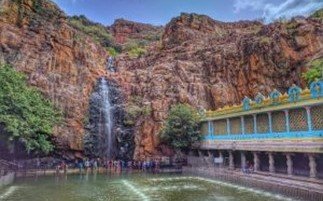 Kapila
Theertham is a famous Saivite Temple and Theertham, located at Tirupati. The idol is
believed to be installed by Kapila Muni and hence Lord Siva here is referred to as
Kapileswara. The temple stands at the entrance to a mountain cave in one of the
steep and
vertical faces at the foot of the Tirumala hills which are part of Seshachalam
Hills, where
the waters of the mountain stream fall directly into Temple Pushkarini known as
“Kapila
Theertham”. A huge stone statue of a seated bull “Nandhi”, Shiva’s steed, greets
devotees
and passersby at the entrance to the temple
Kapila
Theertham is a famous Saivite Temple and Theertham, located at Tirupati. The idol is
believed to be installed by Kapila Muni and hence Lord Siva here is referred to as
Kapileswara. The temple stands at the entrance to a mountain cave in one of the
steep and
vertical faces at the foot of the Tirumala hills which are part of Seshachalam
Hills, where
the waters of the mountain stream fall directly into Temple Pushkarini known as
“Kapila
Theertham”. A huge stone statue of a seated bull “Nandhi”, Shiva’s steed, greets
devotees
and passersby at the entrance to the temple
 Kapila
Theertham is a famous Saivite Temple and Theertham, located at Tirupati. The idol is
believed to be installed by Kapila Muni and hence Lord Siva here is referred to as
Kapileswara. The temple stands at the entrance to a mountain cave in one of the
steep and
vertical faces at the foot of the Tirumala hills which are part of Seshachalam
Hills, where
the waters of the mountain stream fall directly into Temple Pushkarini known as
“Kapila
Theertham”. A huge stone statue of a seated bull “Nandhi”, Shiva’s steed, greets
devotees
and passersby at the entrance to the temple
Kapila
Theertham is a famous Saivite Temple and Theertham, located at Tirupati. The idol is
believed to be installed by Kapila Muni and hence Lord Siva here is referred to as
Kapileswara. The temple stands at the entrance to a mountain cave in one of the
steep and
vertical faces at the foot of the Tirumala hills which are part of Seshachalam
Hills, where
the waters of the mountain stream fall directly into Temple Pushkarini known as
“Kapila
Theertham”. A huge stone statue of a seated bull “Nandhi”, Shiva’s steed, greets
devotees
and passersby at the entrance to the temple
Sri Kalahasti Temple, Srikalahasti
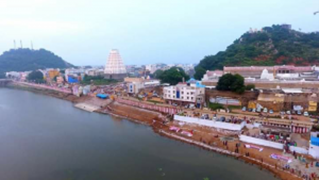 Srikalahasthi is located on the banks of river Swarnamukhi. It is one
of the
important Saiva Kshetras of South India. The name of the place Srikalahasthi comes
from
three animals Sri (Spider), Kala (Snake) and Hathi (Elephant) who worshipped shiva
and
gained salvation here.
Srikalahasthi is located on the banks of river Swarnamukhi. It is one
of the
important Saiva Kshetras of South India. The name of the place Srikalahasthi comes
from
three animals Sri (Spider), Kala (Snake) and Hathi (Elephant) who worshipped shiva
and
gained salvation here.
 Srikalahasthi is located on the banks of river Swarnamukhi. It is one
of the
important Saiva Kshetras of South India. The name of the place Srikalahasthi comes
from
three animals Sri (Spider), Kala (Snake) and Hathi (Elephant) who worshipped shiva
and
gained salvation here.
Srikalahasthi is located on the banks of river Swarnamukhi. It is one
of the
important Saiva Kshetras of South India. The name of the place Srikalahasthi comes
from
three animals Sri (Spider), Kala (Snake) and Hathi (Elephant) who worshipped shiva
and
gained salvation here.
Kalyana Venkateswara Temple, Narayanavanam
 Lord
Sri
Venkateswara Swamy and Sri Padmavathi Ammavaru, daughter of Akasha Raju were married
here.
As the marriage took place in Narayanavaram, Padmavathi’s brother build two Temples;
one is
here, another in Tirumala to co mmemorate this occasion. It is one of the few
temples where
we can see both Venkateswara Swamy along with Padmavathi Devi in one complex. This
Temple
has four small shrines of Sri Padmavathi, Andal, Sri Prayaga Madhava swami and Sri
Varadaraja Swami. At the entrance in front of the Sanctum is the small Garudalwar
Sannidhi.
In addition to these, there are five more temples to the main one. These are
dedicated to
Sri Parasareswara Swami, Sri Veerabadhra Swami, Sri Sakthi Vinayaka Swami, Sri
Agatheeswara
Swami and Sri Avanakshamma.
Lord
Sri
Venkateswara Swamy and Sri Padmavathi Ammavaru, daughter of Akasha Raju were married
here.
As the marriage took place in Narayanavaram, Padmavathi’s brother build two Temples;
one is
here, another in Tirumala to co mmemorate this occasion. It is one of the few
temples where
we can see both Venkateswara Swamy along with Padmavathi Devi in one complex. This
Temple
has four small shrines of Sri Padmavathi, Andal, Sri Prayaga Madhava swami and Sri
Varadaraja Swami. At the entrance in front of the Sanctum is the small Garudalwar
Sannidhi.
In addition to these, there are five more temples to the main one. These are
dedicated to
Sri Parasareswara Swami, Sri Veerabadhra Swami, Sri Sakthi Vinayaka Swami, Sri
Agatheeswara
Swami and Sri Avanakshamma.
 Lord
Sri
Venkateswara Swamy and Sri Padmavathi Ammavaru, daughter of Akasha Raju were married
here.
As the marriage took place in Narayanavaram, Padmavathi’s brother build two Temples;
one is
here, another in Tirumala to co mmemorate this occasion. It is one of the few
temples where
we can see both Venkateswara Swamy along with Padmavathi Devi in one complex. This
Temple
has four small shrines of Sri Padmavathi, Andal, Sri Prayaga Madhava swami and Sri
Varadaraja Swami. At the entrance in front of the Sanctum is the small Garudalwar
Sannidhi.
In addition to these, there are five more temples to the main one. These are
dedicated to
Sri Parasareswara Swami, Sri Veerabadhra Swami, Sri Sakthi Vinayaka Swami, Sri
Agatheeswara
Swami and Sri Avanakshamma.
Lord
Sri
Venkateswara Swamy and Sri Padmavathi Ammavaru, daughter of Akasha Raju were married
here.
As the marriage took place in Narayanavaram, Padmavathi’s brother build two Temples;
one is
here, another in Tirumala to co mmemorate this occasion. It is one of the few
temples where
we can see both Venkateswara Swamy along with Padmavathi Devi in one complex. This
Temple
has four small shrines of Sri Padmavathi, Andal, Sri Prayaga Madhava swami and Sri
Varadaraja Swami. At the entrance in front of the Sanctum is the small Garudalwar
Sannidhi.
In addition to these, there are five more temples to the main one. These are
dedicated to
Sri Parasareswara Swami, Sri Veerabadhra Swami, Sri Sakthi Vinayaka Swami, Sri
Agatheeswara
Swami and Sri Avanakshamma.
Kodandarama Temple
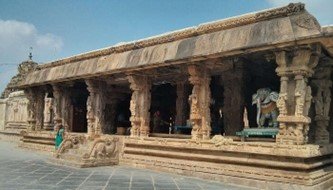 A
dash of
golden colour in a pearly white structure forms the landscape of Kodandarama Temple
of
Tirupati. Dating back to many centu ries ago, the temple was originally built by the
kings
of the Chola dynasty. It was later re-developed by the rulers of Vijayanagara
kingdom. The
temple worships the great king of Ayodhya, Lord Rama.
A popular legend also says that this temple was built after Jambavan went inside an
illuminating cave and found a radiating idol. The compound of this temple has a
shrine
commemorating Lord Rama. Two miniature shrines of Goddess Sita and Lord Lakshmana
are also
constructed in its vicinity. There are inscriptions on the stoned walls of the
temple,
depicting the life of the gods. Every year during the festival of Brahmotsav,
pilgrims
perform aartis and decorate the idols.
A
dash of
golden colour in a pearly white structure forms the landscape of Kodandarama Temple
of
Tirupati. Dating back to many centu ries ago, the temple was originally built by the
kings
of the Chola dynasty. It was later re-developed by the rulers of Vijayanagara
kingdom. The
temple worships the great king of Ayodhya, Lord Rama.
A popular legend also says that this temple was built after Jambavan went inside an
illuminating cave and found a radiating idol. The compound of this temple has a
shrine
commemorating Lord Rama. Two miniature shrines of Goddess Sita and Lord Lakshmana
are also
constructed in its vicinity. There are inscriptions on the stoned walls of the
temple,
depicting the life of the gods. Every year during the festival of Brahmotsav,
pilgrims
perform aartis and decorate the idols.
 A
dash of
golden colour in a pearly white structure forms the landscape of Kodandarama Temple
of
Tirupati. Dating back to many centu ries ago, the temple was originally built by the
kings
of the Chola dynasty. It was later re-developed by the rulers of Vijayanagara
kingdom. The
temple worships the great king of Ayodhya, Lord Rama.
A popular legend also says that this temple was built after Jambavan went inside an
illuminating cave and found a radiating idol. The compound of this temple has a
shrine
commemorating Lord Rama. Two miniature shrines of Goddess Sita and Lord Lakshmana
are also
constructed in its vicinity. There are inscriptions on the stoned walls of the
temple,
depicting the life of the gods. Every year during the festival of Brahmotsav,
pilgrims
perform aartis and decorate the idols.
A
dash of
golden colour in a pearly white structure forms the landscape of Kodandarama Temple
of
Tirupati. Dating back to many centu ries ago, the temple was originally built by the
kings
of the Chola dynasty. It was later re-developed by the rulers of Vijayanagara
kingdom. The
temple worships the great king of Ayodhya, Lord Rama.
A popular legend also says that this temple was built after Jambavan went inside an
illuminating cave and found a radiating idol. The compound of this temple has a
shrine
commemorating Lord Rama. Two miniature shrines of Goddess Sita and Lord Lakshmana
are also
constructed in its vicinity. There are inscriptions on the stoned walls of the
temple,
depicting the life of the gods. Every year during the festival of Brahmotsav,
pilgrims
perform aartis and decorate the idols.
Vijayanagar Empire (Chandragiri Fort), Chandragiri
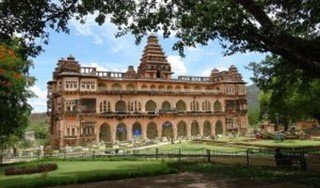 Chandragiri was under the rule Vijayanagara empire for about three
centuries
and came under the control of the Vijayanagarayadava rulers in 1367. It came into
prominence
during 1560s during the reign of Saluva Narasimha Deva Raya. The palace is an
example of
Indo-Sarcen architecture of Vijayanagara period. The crowning towers represents the
Hindu
architectural elements. The palace was constructed using stone, brick, lime mortar
and
devoid of timber. Some of important kavyas or epic poems are written in this fort
under the
patronage of Vijayanagara kings. Inside the fort are eight temples, Raja Mahal, Rani
Mahal
and other ruined structures. Inside the fort are Raja Mahal and Rani Mahal which are
quite
well maintained for more than 300 years and Raja Mahal is converted as Archeological
Museum
by Arechological Survey of India.
Chandragiri was under the rule Vijayanagara empire for about three
centuries
and came under the control of the Vijayanagarayadava rulers in 1367. It came into
prominence
during 1560s during the reign of Saluva Narasimha Deva Raya. The palace is an
example of
Indo-Sarcen architecture of Vijayanagara period. The crowning towers represents the
Hindu
architectural elements. The palace was constructed using stone, brick, lime mortar
and
devoid of timber. Some of important kavyas or epic poems are written in this fort
under the
patronage of Vijayanagara kings. Inside the fort are eight temples, Raja Mahal, Rani
Mahal
and other ruined structures. Inside the fort are Raja Mahal and Rani Mahal which are
quite
well maintained for more than 300 years and Raja Mahal is converted as Archeological
Museum
by Arechological Survey of India.
 Chandragiri was under the rule Vijayanagara empire for about three
centuries
and came under the control of the Vijayanagarayadava rulers in 1367. It came into
prominence
during 1560s during the reign of Saluva Narasimha Deva Raya. The palace is an
example of
Indo-Sarcen architecture of Vijayanagara period. The crowning towers represents the
Hindu
architectural elements. The palace was constructed using stone, brick, lime mortar
and
devoid of timber. Some of important kavyas or epic poems are written in this fort
under the
patronage of Vijayanagara kings. Inside the fort are eight temples, Raja Mahal, Rani
Mahal
and other ruined structures. Inside the fort are Raja Mahal and Rani Mahal which are
quite
well maintained for more than 300 years and Raja Mahal is converted as Archeological
Museum
by Arechological Survey of India.
Chandragiri was under the rule Vijayanagara empire for about three
centuries
and came under the control of the Vijayanagarayadava rulers in 1367. It came into
prominence
during 1560s during the reign of Saluva Narasimha Deva Raya. The palace is an
example of
Indo-Sarcen architecture of Vijayanagara period. The crowning towers represents the
Hindu
architectural elements. The palace was constructed using stone, brick, lime mortar
and
devoid of timber. Some of important kavyas or epic poems are written in this fort
under the
patronage of Vijayanagara kings. Inside the fort are eight temples, Raja Mahal, Rani
Mahal
and other ruined structures. Inside the fort are Raja Mahal and Rani Mahal which are
quite
well maintained for more than 300 years and Raja Mahal is converted as Archeological
Museum
by Arechological Survey of India.
